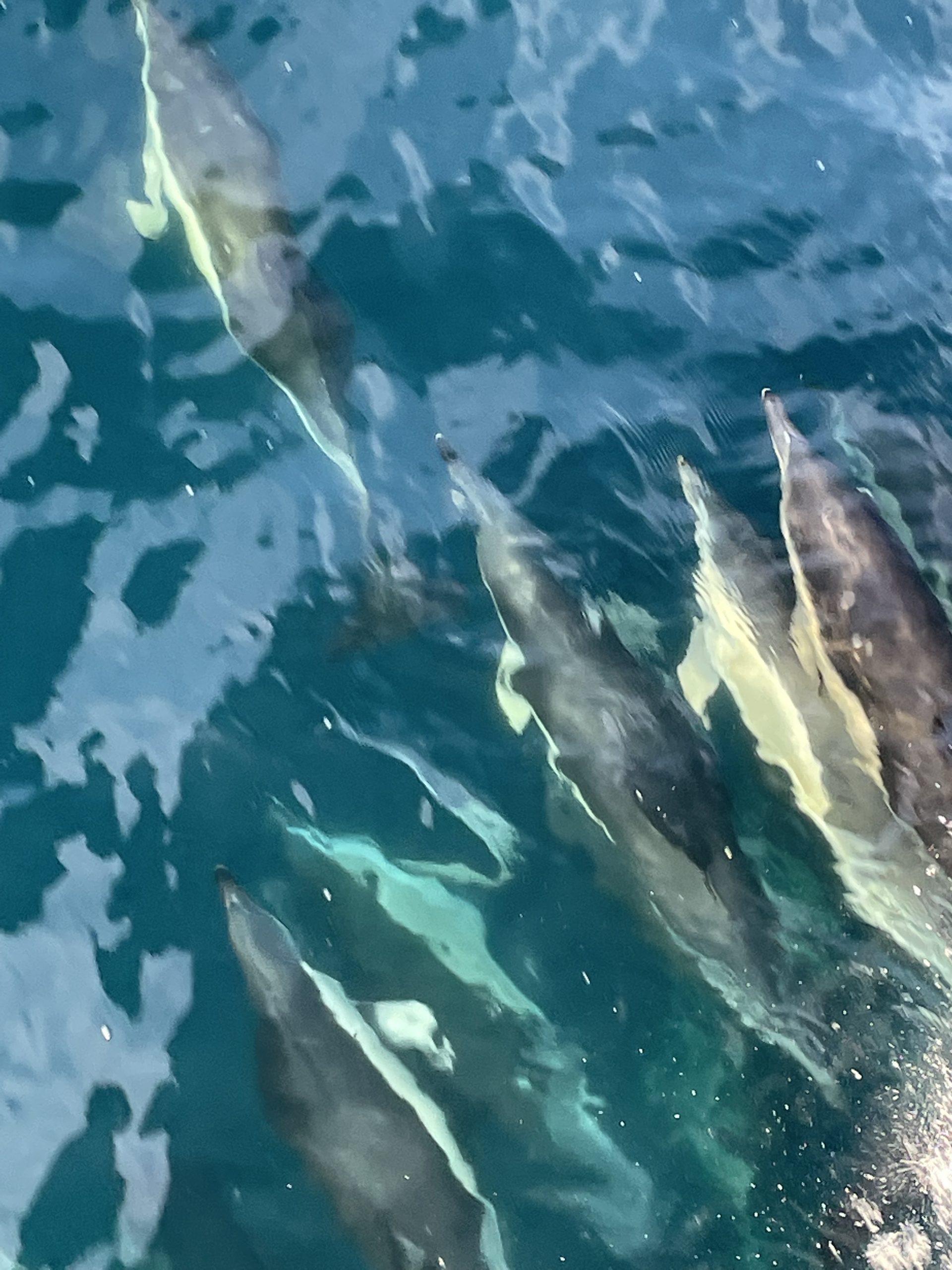So much to do… but oh wait, whales and dolphins!
Our first day at sea was quite eventful! We are transecting to Nova Scotia from Woods Hole and so most of the ship had some free time to do some wildlife watching and for anyone who knows me, you know I love marine mammals. We saw several species of pelagic birds but I will let our resident bird watcher, Dave, tell you more about those. Our day started with a couple of the crew spotting some pilot whales, Delphinus globiceps. They are one of the smaller whales and received their name because their pods are believed to be “piloted” by a leader. Their genus name is a combination of globe and head, which is a distinctive characteristic of the whale. These whales range from gray to black in color. This Atlantic long finned pilot whale tends to eat squid and cod. We saw several off the port of the ship, confirming the small groups of 10-30 they usually reside in.
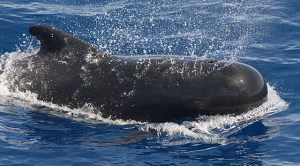
_________________________________________________________________________________________________________________
After dinner, as many of us were getting back to work, we were distracted by several dolphin pods swimming along the bow of the ship. We think there was a combination of 2 different species of dolphin. The Atlantic white-sided dolphin (Lagenorhynchus acutus) is a common sighting in the cooler waters of the North Atlantic Ocean and you can also see the Common dolphin (Delphinus delphis) as well. The Atlantic white-sided species range from 400-500 pounds and their name comes from their distinctive white patch behind their dorsal fin. Much of their belly is white while their backs are gray to black and they can have a distinct yellow patch towards the back of their body. Both species are great examples of countershading, with the lighter bellies blending into the sunlight when looking up from below and their darker back sides blending into the blue waters when you look at them from above. The Common dolphin we saw was short beaked. They are medium in size, about 6-8 feet long and can be found in the 100’s or even 1,000’s and it certainly felt like that as we kept seeing more and more dolphins come and play in the wake of the ship. They looked like they were having such a grand time! They were whistling and being very vocal, as if they were calling others to come and play alongside our ship. As we watched, more and more dolphins kept coming and playing around the ship. Their largest population is well known in the waters near Cape Cod. Their favorite meal is herring or squid. Watching these dolphins play was an amazing treat for everyone on the ship.
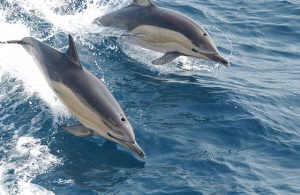
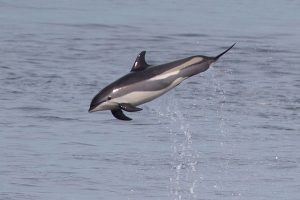
_________________________________________________________________________________________________________________
Within the 100’s of dolphins surrounding the ship, we also saw several whales in the distance, spouting their mist. While no one is an expert on marine mammals on the ship, we have several whale and dolphin enthusiasts, including myself, that think we saw fin whales (Balaenoptera physalus). One of the reasons we deducted this was the size – the whales we spotted were large! Fin whales are the second largest whale after the blue whale and can be up to 60 feet long, which is about 1/4 the length of the ship we are on, the Atlantis. Second, and more distinct, is their dorsal fin. One of the scientists had binoculars and had a good view of their long back and small dorsal fin. These whales are long and slender, with a brownish body. Fin whales are filter feeders and their primary food is small fish, squid, and krill.
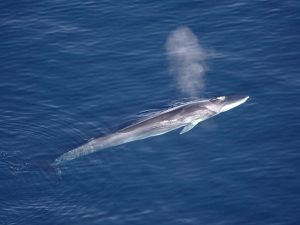
_________________________________________________________________________________________________________________
After talking with 3rd mate Brian Caldwell about my love for marine mammals he told me that I may be in luck and see a Northern Bottlenose whale (Hyperoodon ampullatus) since they live in the area off the coast of Nova Scotia where we will core. These, like many other whales, were heavily hunted so their numbers are dwindling. They can reach 32 feet in length and weigh between 12,000-16,000 pounds. They have large melons (heads) and a beak. They feed on squid and fish such as halibut. This area of Nova Scotia has a small population that is estimated between 10,000-45,000. Seeing whales that are rarely seen will make my year so I’m really hoping we see them in the next day or two while we are coring here. I will be sure to let you know and include photos or videos if I’m able to.
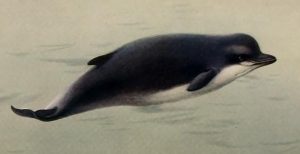
In the meantime, please enjoy this video footage that Ale, Lauren, David, and I recorded. Final recording was edited by the incredibly talented Ale Martinez. Individual marine mammal photo credit: Wikipedia.
Location: 42 degrees 57.367’ N, 60 degrees 23.862’ W
Cruise Day #: 3
Water Depth: 150 meters on continental shelf
Weather Conditions: Sunny
Wave and Sea Conditions: Calm
